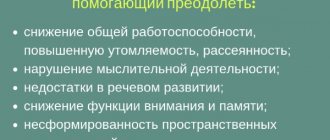Not only announcers or presenters should have clear and correctly constructed speech. If you want to make a good impression on others and surprise everyone with your beautiful speech, then practice the tongue twisters that we have selected for you today.
Not only announcers or presenters should have clear and correctly constructed speech
What are tongue twisters?
Vladimir Ivanovich Dal described tongue twisters as follows:
A tongue twister, a pure tongue twister, is composed to exercise rapid and clear pronunciation, why sounds collide in it, making it difficult to speak quickly; but many pure stories also include the proverb: “You can’t change our sexton” (you can’t change a person); “I reported, but didn’t complete the report, but began to complete the report, then reported” (all at random, unsuccessfully); “There is a priest on a head, a cap on the priest, a head under the priest, a priest under a cap” (that is, everything is the same).
Long and difficult
Complex tongue twisters for speech development are, as a rule, massive in volume, aimed at practicing several sound combinations at once and are difficult to reproduce. But that’s where the excitement lies! This is precisely why such tongue twisters attract and beckon for the development of speech at 6 years old, at 12 and at 20 - with equal force. One of the regularly encountered and used tongue twisters in this category can be considered a pure tongue twister about blackberries and blueberries (if you didn’t live near a blackberry, but if you lived near a blueberry, then blueberry jam is familiar to you, but blackberry jam is completely unusual. If you lived near blackberry, then your usual blackberry jam... and so on), as well as about apricot, coconut and others like them (no apricot, coconut, radish - and the like).
How to improve speech and diction using tongue twisters?
Tongue twisters, which, as they say, “can break your tongue,” are an excellent exercise for developing diction and other vocal skills. Pronouncing them is useful not only for children in order to pronounce sounds correctly, but also for professional actors, announcers, TV presenters and anyone who would like to speak beautifully and clearly.
This is an effective method of developing diction, getting rid of tongue-tied speech, speaking too fast or, on the contrary, slow.
The correct technique for pronouncing a tongue twister is as follows: first, the tongue twister is pronounced clearly and slowly, and later, constantly increasing the pace and repeating the same thing many times as clearly and separately as possible.
Tongue twisters, which, as they say, “can break your tongue,” are an excellent exercise for developing diction and other vocal skills
Courses for development
We also have interesting courses that will perfectly pump up your brain and improve your intelligence, memory, thinking, and concentration:
Speed reading in 30 days
Would you like to quickly read books, articles, newsletters, etc. that interest you? If your answer is “yes,” then our course will help you develop speed reading and synchronize both hemispheres of the brain.
With synchronized, joint work of both hemispheres, the brain begins to work many times faster, which opens up much more possibilities. Attention , concentration , speed of perception are enhanced many times over! Using the speed reading techniques from our course, you can kill two birds with one stone:
- Learn to read very quickly
- Improve attention and concentration, as they are extremely important when reading quickly
- Read a book a day and finish your work faster
Sign up for a courseFree lesson
We speed up mental arithmetic, NOT mental arithmetic
Secret and popular techniques and life hacks, suitable even for a child. From the course you will not only learn dozens of techniques for simplified and quick multiplication, addition, multiplication, division, and calculating percentages, but you will also practice them in special tasks and educational games! Mental arithmetic also requires a lot of attention and concentration, which are actively trained when solving interesting problems.
Sign up for a courseRead more
Secrets of brain fitness, training memory, attention, thinking, counting
If you want to speed up your brain, improve its functioning, improve your memory, attention, concentration, develop more creativity, perform exciting exercises, train in a playful way and solve interesting problems, then sign up! 30 days of powerful brain fitness are guaranteed to you:)
Sign up for a courseRead more
Development of memory and attention in a child 5-10 years old
The purpose of the course: to develop the child’s memory and attention so that it is easier for him to study at school, so that he can remember better.
After completing the course, the child will be able to:
- 2-5 times better to remember texts, faces, numbers, words
- Learn to remember for a longer period of time
- The speed of recalling the necessary information will increase
Sign up for a courseRead more
Super memory in 30 days
As soon as you sign up for this course, you will begin a powerful 30-day training in the development of super-memory and brain pumping.
Within 30 days after subscribing, you will receive interesting exercises and educational games in your email that you can apply in your life.
We will learn to remember everything that may be needed in work or personal life: learn to remember texts, sequences of words, numbers, images, events that happened during the day, week, month, and even road maps.
Sign up for a courseRead more
Money and the Millionaire Mindset
Why are there problems with money? In this course we will answer this question in detail, look deep into the problem, and consider our relationship with money from psychological, economic and emotional points of view. From the course you will learn what you need to do to solve all your financial problems, start saving money and invest it in the future.
Sign up for a courseRead more
Possibility of independently compiling a complete speech
These expressions were then invented by the people so that everyone had the opportunity to compose them. This can easily be done during one very interesting game in a fun company. A minimum of four people is required. The players agree on a sound - for example, the sound "r" - with which all words in the future tongue twister will begin. And then the questions are written on the piece of paper: who (you need to write the name, nickname, nickname, etc.), what did, where, why (if the game is played with more people than four, you can use your imagination and come up with additional tasks).
Each of the players takes turns writing his answer to a question, wrapping the piece of paper so that no one can see what he has written, and passing it on. So the sheet might look something like this:
Roma/wolverine/child, roared a beluga/drove a steering wheel/worked as a robot, in Rome/at a rodeo/on a ranch, (because) he got up early/was born in a shirt/the cancer on the mountain did not whistle.
By combining these answers into phrases, you can get the most ridiculous tongue twisters, but they will nevertheless train the pronunciation of the sound “r”, and in addition, will greatly amuse their creators and their friends.
Sounds with which problems occur most often
Oddly enough, this includes not only the sound “r”, with which a huge number of people really have a lot of difficulties. It is also very common to encounter difficulties with the pronunciation of the sounds “l”, hissing (as well as “z” and “s”). Some people confuse “n” and “m”, while others mumble paired consonant sounds (“b” - “p”, “v” - “f”, and so on). Each of these sounds has its own tongue twisters. So it is not at all necessary to train diction for everyone - you can find exactly what you need.
As an example of tongue twisters for speech development and pronunciation training, we can give the following couple of examples:
- We gave Lila a lily (we sharpen the “l”).
- Breathing noisily, six little frogs rustle (we sharpen the “sh”).
- Forty forty arrived on time (we sharpen the “s” and “r”) and so on.
Tongue twisters for the letters f, x, c, h, w, sch
Difficulties with hissing sounds, then you should train on phrases containing the sounds “f”, “x”, “ts”, “ch”, “sh”, “sch”.
- The fluorographer was fluorographing the fluorographer.
- The heron's chick clung tenaciously to the flail.
- Scales on a pike, bristles on a pig.
- Piggy laughs well. Piggy is our laughing one.
Train your reading, pronunciation and articulation skills. Or maybe you will become a great famous speaker! To do this, just follow our advice, and you will succeed!
On the topic: methodological developments, presentations and notes
Why do we need cars and trains?
The work is intended for first grade students in the subject “The World Around Us”, helping to broaden the horizons and general development of young children. When creating a presentation...
Why do you need to know the characteristics of a child’s temperament?
Material for parents interested in developing their child's potential includes a test to determine the child's temperament, its description and recommendations....
Why does a school need an Escort Service?
The organization of an Escort Service in an educational institution involves solving, in our opinion, one of the main tasks - creating an educational space at school to provide a child, regardless of his social…
Possible variants of tongue twisters for practicing diction.
- From the clatter of hooves, dust flies across the field.
- The bull was blunt-lipped, the bull was blunt-lipped, the bull's white lip was dull.
- The crab made a rake for the crab. The crab gave the rake to the crab: rake the hay, crab, rake!
- Pankrat Kondratov forgot his jack, and Pankrat cannot be lifted on the highway without a jack
- Cuckoo bought a hood. Put on the cuckoo's hood. How funny he is in the hood!
- Our guest stole our cane.
- The pharaoh's favorite was replaced by sapphire and jade.
- One day, while scaring a jackdaw, he saw a parrot in the bushes, and the parrot said: you should scare the jackdaws, pop, scare them, but don’t you dare scare the jackdaws, pops, in the bushes, don’t you dare scare the parrot.
- Thirty-three ships tacked, tacked, but did not tack.
- There is grass in the yard, there is firewood on the grass - one firewood, two firewood, three firewood. Don't cut wood on the grass in your yard.
- In the shallows we lazily caught burbot. In the shallows we lazily caught tench. Was it not you who sweetly begged me for love and beckoned me into the mists of the estuary?
- Karl stole corals from Clara, and Clara stole a clarinet from Karl.
- Queen Clara severely punished Charles for stealing the coral.
- Tell us about your purchases. What about purchases? About shopping, about shopping, about your purchases.
- Libretto by Rigoletto.
- On Mount Ararat Varvara was picking grapes.
- Osip was hoarse, and Arkhip was hoarse.
- Watermelons were being reloaded from truck to truck. During a thunderstorm, the body fell apart in the mud from a load of watermelons.
- The heron wasted away, the heron was withered, the heron was dead.
- Sixteen mice walked and six found pennies, and the mice, which are worse, noisily fumble for pennies.
- Once upon a time there lived three Chinese men - Yak, Yak-Tsidrak, Yak-Tsidrak-Tsidron-Tsidroni, and three more Chinese women - Tsypa, Tsypa-Dripa, Tsypa-Dripa-Lampomponi. Yak got married to Tsypa, Yak-Tsidrak to Tsypa-Dripa, Yak-Tsidrak-Tsidron-Tsidroni to Tsypa-Dripa-Lampomponi... So they had children: Yak and Tsypa - Shah, Yak-Tsidrak and Tsypa-Drypa - Shah -Sharah, at Yak-Tsidrak-Tsidroni with Tsypo-Drypa-Lampoponi - Shah-Sharah-Sharoni.
Tips for learning tongue twisters
To make diction expressive and improve its quality, you need to pronounce phrases every day for at least 15-20 minutes, 2 to 5 times.
Constantly add new ones to those already learned. Print them out on a piece of paper in large letters and hang them around the house in the places you visit most often.
For example, on the refrigerator. Before you open it, read the entire saying; when you close it, read it again.
Replace those already learned with new ones after about 10 days. This is the period during which it takes root and no longer contributes to the improvement of articulation and the development of diction.
Procedure for working with tongue twisters for children and adults
First, take short, rhyming, easy-to-understand phrases to work on. When you start studying them with your child, it is best to read syllables first, then whole words, and finally the whole thing. If it doesn’t work out, then don’t scold your child.
Leave your studies for a while. Gradually return to them. Subsequently, everything will begin to work out for him. At this moment you should praise the child, this will give him self-confidence and develop even more desire.
As for adults and older children, at the first stage you should work with hissing and dull sounds. Let us remind you that these are “p”, “t”, “w”, “s”.
The second stage involves working with whistling and voiced “ts”, “ch” and “sh”.
And finally, work with the third group - with sonorant sounds “m”, “n”, “l”, “r”.
Monitor yourself, record it on a voice recorder and listen to it. When you notice which letters and sounds you have errors with, there may be defects, work with them more.
Basic principles of speaking
It would be wrong to think that learning tongue twisters is easy and simple. You can’t “take it and read it”; here you also need to be patient, as in any other matter.
The first thing to do is to pronounce the tongue twister slowly and even preferably syllable by syllable, carefully articulating. It is important to ensure that each sound is pronounced clearly, cleanly and intelligibly. There is no need to rush here.
After carefully reading the tongue twister several times, you should learn it by heart - a person can do this even with a poor memory; the volume of tongue twisters is relatively small (especially if it is only one line). To make learning easier, you can use the so-called cheat sheets - with your hands: for example, bend your fingers for each word, or clench them into fists, or tap out the rhythm. This method is especially good for young children.
The second phase is to hone articulation. To do this, you will need an assistant and a supply of patience both on his part and on the part of the trainee himself. The assistant must be seated opposite you, and then over and over again slowly, clearly tell him the tongue twister - but without sound. This exercise must be performed until the assistant can read each letter on the lips without any problems and put the tongue twister together.
When you manage to recognize the phrase by your lips, you can move on to the next stage, even more difficult: pronouncing it in a whisper. Speech must be so clear that whispers are easily understood and audible. As an example, you can take the speech of a theatrical prompter - this is the one who hones his whisper to filigree clarity!
The next point is to increase the volume. Now the same thing needs to be done loudly and with expression. It’s like being in a literature class in school, reciting a poem assigned for home by heart.
And finally, the last stage is a change in intonation. The tongue twister, which has already been memorized by this moment, needs to be told in different ways: loudly and quietly, in a child’s voice and in an old man’s rattling, in a chant and recitative – there are a million intonations. The most important thing is that no matter how the tongue twister is pronounced for speech development, it should be done quickly. And, of course, without losing clarity.
Of course, you shouldn’t think that all this can be accomplished in one day. Diction training requires quite a lot of time and patience - it will take at least several weeks before something starts to work out. You need to devote at least thirty to forty minutes to this every day. The main thing is not to give up halfway. By the way, experts recommend that all these exercises be performed in motion - you can walk, run, do exercises, and so on, however, you will also have to monitor proper breathing.
Another important factor: in order for everything to work out correctly, you need to not just mechanically rattle off a memorized lesson, but imagine in your imagination everything that is described in the tongue twister. If we are talking about how “mom washed Mila,” you should paint this picture in your head as vividly as possible. Here mom is washing Mila, now she dropped the soap, now Mila is happy... Only then will it be possible to find the right intonations.
And finally, good advice: if you read books aloud, this will not only help develop correct, clear intonations and train diction, but will also develop phonemic awareness.
Who needs to speak clearly?
Regardless of whether a person has “porridge in his mouth” or not, he must have correct, clear and understandable speech, if his profession requires this. For example, a teacher or an announcer - they talk throughout the working day, and it is very important that they are understood correctly both at nine in the morning and at five in the evening.
This same category of people who earn their bread and butter with their language includes various kinds of artists, managers, sales agents, directors, businessmen, and so on. All of them simply need to have clear diction, which means they cannot do without tongue twisters for speech development.
Let's touch on the definition of the term
Before discussing the merits of tongue twisters, it is necessary to clearly define what kind of animal this is. This is a humorous (not always, but most often) work, usually rhymed (usually short, one or two lines, but there are longer versions), which contains difficult to pronounce words with repeated sounds. They need to be pronounced quickly and clearly, which is very difficult - this is the whole point of a tongue twister. As a rule, tongue twisters contain alliteration - the repetition of consonant sounds (up to a hundred years old, we grow old - an example of alliteration).
There are a lot of tongue twisters, and what’s more, they are constantly being modified. Old tongue twisters can be improved by supplementing or shortening them, changing words in places. Therefore, there can be a great many variants of the same tongue twisters.






